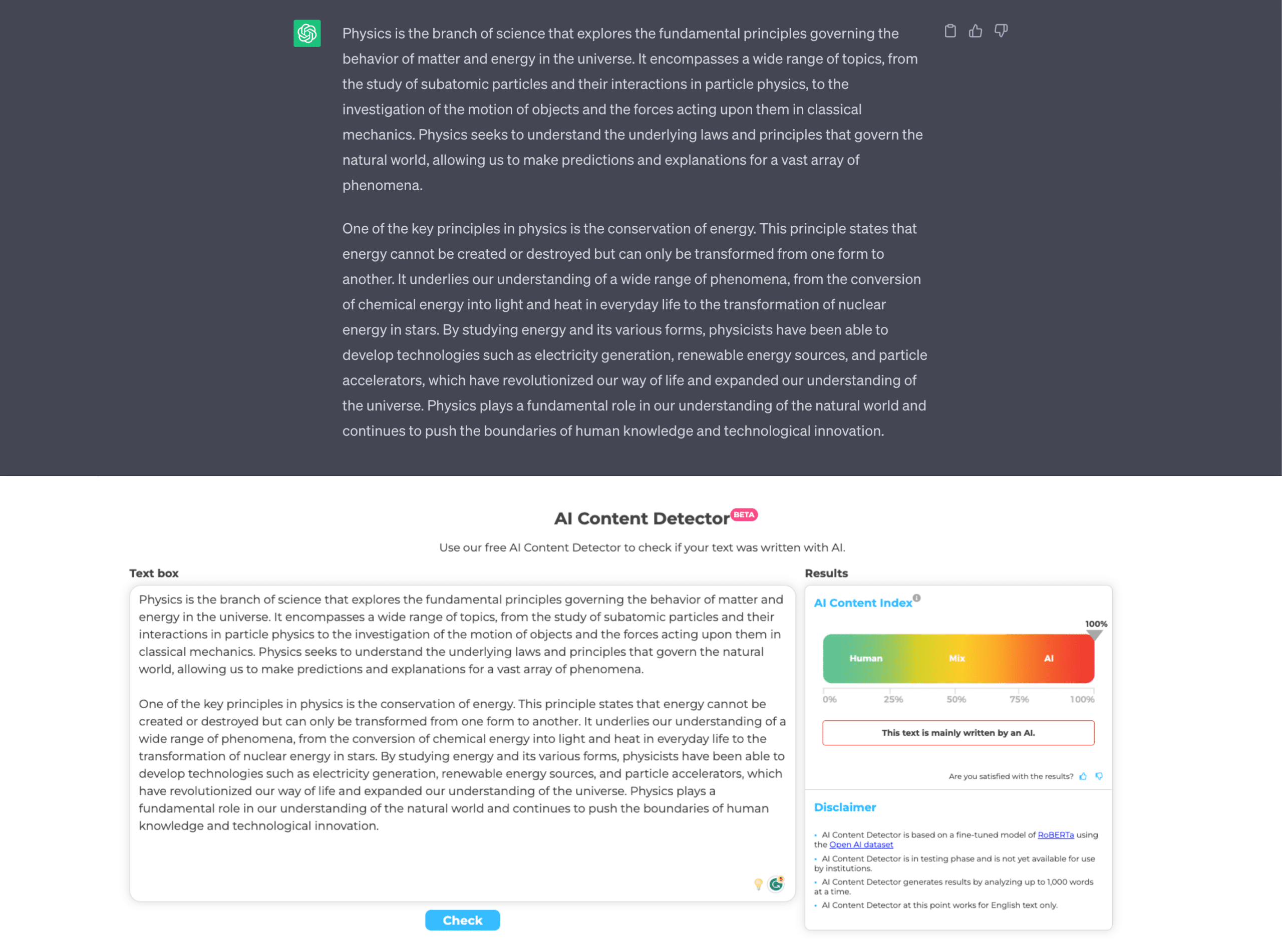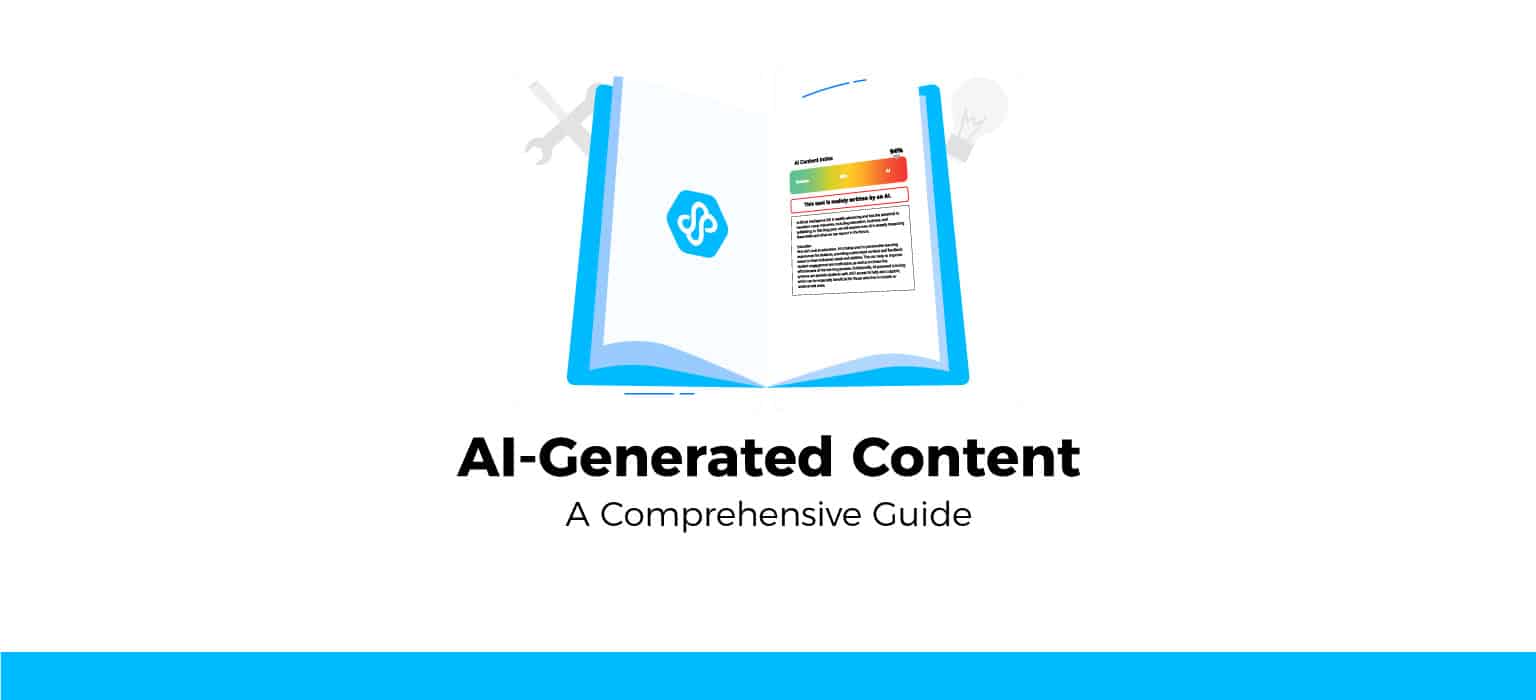Artificial intelligence is snowballing in the tech sector and it has taken a significant hit on the content creation sector. The race to create quality and insightful content has been changed to a race to create more content as it’s becoming easier using AI-generated content.
According to Internet Live Stats, every year, more than 3 billion blog entries are published globally. 5,750 blog articles are published every minute or 8.28 million blog posts per day. And undoubtedly this number will increase with the presence of ChatGPT.
In 2023, businesses are throwing their eyes more toward leveraging tools that can fast produce content in the fast-growing industry to overcome competition by having more content on their site.
In this post, we’ll discuss everything related to AI-generated content but before diving deeper, let’s first properly define what it is.
What is AI-generated content?
AI-generated content refers to any form of digital content (including blogs, articles, descriptions, and any other written material) that is created or generated by artificial intelligence technologies without direct human involvement.
AI algorithms are able to analyze large amounts of existing data and patterns to perfectly mimic human-like creative processes which allows them to generate new content almost autonomously. AI models are able to generate articles, essays, product descriptions, and news reports and also extend to fictional stories just needing a human to provide a prompt for it.
While AI has been the stuff of futuristic sci-fi novels in the past, it has now taken an integral part of our daily lives, to the point that ‘people are getting addicted to it‘.

Pros and cons of AI-generated content
Just like anything else in the world, there are two sides to the coin and AI-generated content is no exception. It’s important to this point to strike a balance between properly using the advantages that AI models offer but also to recognize their limits.
On the positive side, AI-generated content is fast and can free up your time and possibly save a lot of money for businesses.
However, there are downsides as well. While it has amazing features, it lacks the personal touch and understanding that only a human being can bring. AI models might not grasp complex meanings or nuances of what the content should provide.
Pros
- Efficiency
- Cost-effective
- Language proficiency
In terms of efficiency, there’s no doubt that AI models can produce vast amounts of content in a short span of time. This particular feature can become in handy when there’s a need to create content quickly or when handling large amounts of data as well.
Many businesses seem to lean more towards AI-generated content solely based on the fact that it saves them money. Once properly developed, AI models can be a very economical option as opposed to human resources.
And since AI models are trained on vast amounts of textual data from diverse sources, language proficiency comes naturally to it. The data that it trained on allows them to firmly grasp the language and grammar of almost all languages that the model is trained on. Producing content that is Grammarly correct, coherent, and contextually appropriate seems like no big deal to it.
Cons
- Lack of human touch
- Limited contextual understanding
- Bias and misinformation
- Limited creativity
There’s no doubt that once you get used to ChatGPT’s responses, you’ll immediately recognize that something’s off and that the article is possibly generated using AI without the need to check it on an AI detector. That’s a result of the content lacking human touch and emotional depth that is only created by human writers. The emotions that are delved into articles by humans are very hard to replicate by an AI and it shows.
While AI models have a very deep understanding of languages, more often than not they lack the contextual understanding of it. AI models operate based on patterns and statistical analysis rather than focusing on true comprehension. As a result, the content sometimes misses the deeper meaning or cultural references at times that a human writer would be able to capture.
One of the most significant issues that people have with AI models is their bias and misinformation. The AI model is only as biased and misinformed as the data it was fed when it was trained on. If the data contained biased information, it will produce biased content – simple as that. AI models have been able to generate content that aligns with existing stereotypes and cultural biases, so beware of that.
While AI models can spark creativity if used for brainstorming, it isn’t creative in themselves. AI models operate based on patterns and examples from the training data, which leaves them unable to create something out of the blue as humans do.
When is AI-generated content useful?
There is no doubt that AI-generated content can be useful in many instances. Producing mass content is not always harmful and there’s a good reason why ChatGPT is being used as much as it does.
AI-generated content is useful on:
- Creating mass content at scale
- Multilingual content creation
- Assisting human writers
AI models are amazing at creating content at scale while also maintaining cost efficiency. Using ‘little resources’ so to speak, businesses are able to create vast amounts of content within a short timeframe. Compared to human begins AI can generate content at a much faster pace which allows businesses to meet tight deadlines and handle high-volume content requirements.
Another useful case of using AI models would be multilingual content creation. AI models can be trained in multiple languages and are able to create content in these languages (kind of) flawlessly. This comes in handy for businesses that are looking to reach global audiences at an effective level. This kind of model can also be useful when it comes to translation tasks and localizing content to meet the needs of specific groups of people in different areas.
The most ‘noble’ use of AI models is to assist human writers and content creators. AI models are able to generate ideas and provide suggestions when the writers are experiencing what’s called “Writer’s block”. They can also help with generating outlines, and conducting research while also providing statistical data that human writers can refine.
When is AI-generated content harmful?
Now to the ‘dark’ side of AI-generated content.
While AI can have amazing benefits, there are instances where it can be harmful and can slow the process of content creation.
AI-generated content is harmful on:
- Spreading misinformation
- Amplifying biases
- Insensitivity to context
AI-generated content is only as good as the data it is trained on. And most likely every vast amount of data that is used has misinformation to some degree. The dataset most likely contains inaccuracies, biases, and false information along the useful content. If the content is not carefully monitored and published as the AI model generates, the content can unintentionally propagate misinformation and will lead to the spread of it to a wide audience.
Additionally, AI models are really great at amplifying biases. If the data that was fed to it contains bias on a topic, you can be assured that that will only get amplified and the model will only use facts to protect that bias. There’s no reason why it would dig deeper and see to the other side of a particular argument. If the data says something is X, there’s absolutely no way the AI model will raise philosophical questions to itself whether that something is instead Y.
As advanced as AI models are, they definitely lack complex cultural contexts or social dynamics. This can lead to the model generating content that is sensitive or offensive for a specific audience. This is why human input and review are crucial to ensure that the content that is published is aligned with cultural sensitivities.
Simply said, inviting AI models to parties and leaving them unattended is not a good idea, so to speak.
How to detect AI-generated content?
Detecting AI-generated content can be a bit challenging as AI models such as ChatGPT are designed to mimic human language and writing. However, there are strategies that you can detect AI content such as
- Looking for inconsistencies
- Analyzing language patterns
- Running them through an AI detector
AI models may be really good at creating mass content, but they often lack consistency even within a single article they wrote on a single prompt. More often than not, the content lacks coherence and has inconsistencies in tone, style, and even factual information. Paying attention to abrupt shifts in writing style, unusual grammar, or inconsistency in the narrative flow will give you a hint of whether a text is AI-generated or not.
Another way to spot AI-generated content on the spot is to check for language patterns. Interstingly, AI models tend to exhibit certain language patterns such as generic phrases or overusing a particular word or phrase. This is a great indication to tell that a text may be AI-generated. Keeping an eye also on the absence of personal experiences might suggest that the text was not human-written.
Or, taking the easy way, you can run the text through an AI detector. AI detectors are tools made to specifically run tests on corpora of text and recognize patterns and flaws in the text and give out very precise indexes whether that text is AI-generated or not. The way they work is pretty easy – you paste the text into the text area, you press a button, the algorithm does the work for you and you will be presented with an index that shows whether the text is human-written or AI-generated. This can save you time and ensure that the content you’re reading is genuine or not.
You can use Crossplag’s AI detector at no cost and experience its capabilities firsthand!

Conclusion
In conclusion, the rise of AI has undoubtedly had a great impact on the content creation world. With the ability to mass-generate content quickly and at a low cost, AI-generated content has become increasingly prevalent. However, it’s important to know that there are upsides and downsides to this.
While AI models can be cost-efficient, language proficient, and can create a mass amount of content in short timespans, there are downsides to it as well. It often lacks a personal touch and emotional depth that only human writers can offer. AI also struggles to understand complex meanings and cultural references leading to it not being very friendly to specific audiences.
Additionally, detecting AI-generated content can be challenging, but strategies such as looking for inconsistencies, analyzing language patterns, and utilizing AI detectors can provide insights into its origins.
So, understanding in-depth what AI-generated is and the pros and cons of it, are crucial for using AI-generated content properly and accurately.

Korab has dedicated the past decade to the marketing industry, focusing specifically on the intricate field of Search Engine Optimization (SEO). Despite his background in development, Korab’s unwavering passion for marketing drives his commitment to success in the field.
He’s been an Inter fan since he was a kid, which makes him highly patient for results.
Korab does not hike.

